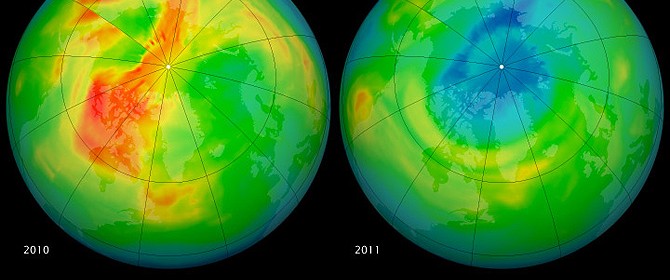The Arctic’s ozone hole

|
Getting your Trinity Audio player ready...
|
The ozone layer over the Arctic Circle developed a giant hole this winter, scientists say. Over the North Pole, 40 percent of the ozone layer has disappeared—a record seasonal loss. Ozone high in the atmosphere shields the Earth from harmful UV rays, and it fluctuates seasonally; usually about 25 percent of the Arctic’s ozone layer fades every winter. In the 1970s, scientists discovered that chlorofluorocarbons (CFCs) used in air conditioners, refrigerators, and aerosols were drifting high into the atmosphere and combining with ozone, stripping the planet of its natural UV protection. UV rays can cause cancer, and damage plants and marine life. As a result, most nations are phasing out CFCs. But the CFCs already released will linger for decades. As weather moves the ozone hole farther south this spring, researcher Markus Rex says, people in the northern part of the U.S. and Canada may get increased UV exposure. “Sunburn times could drop to 20 minutes,” he said.

 Print
Print